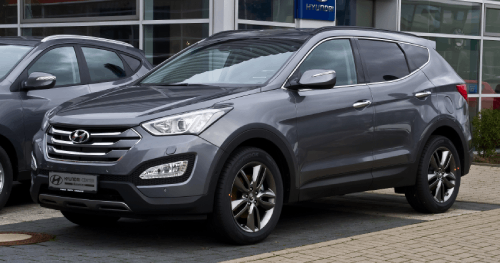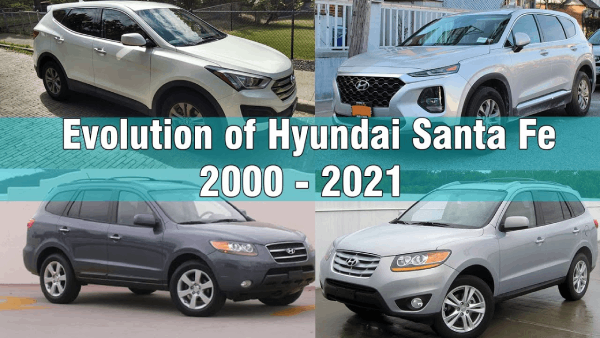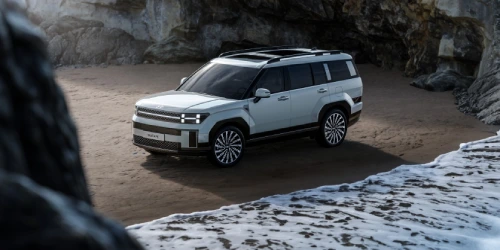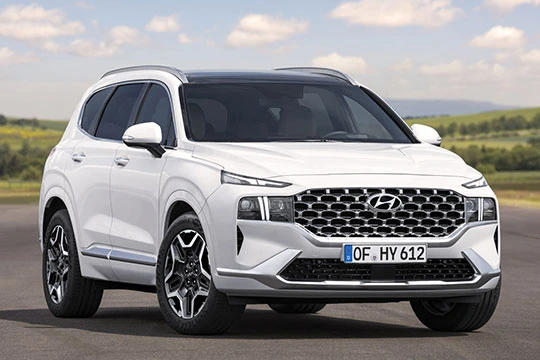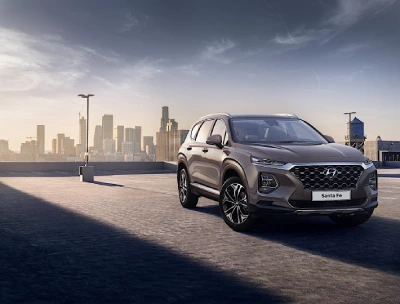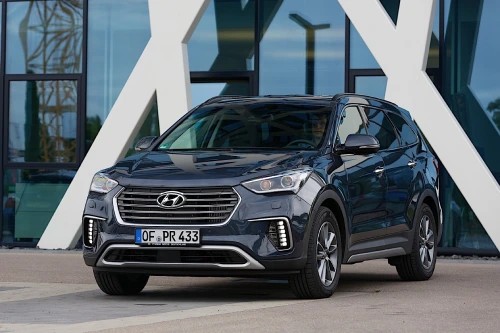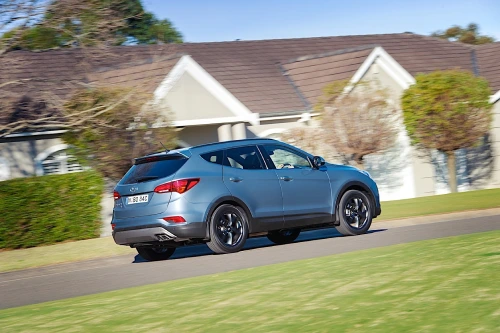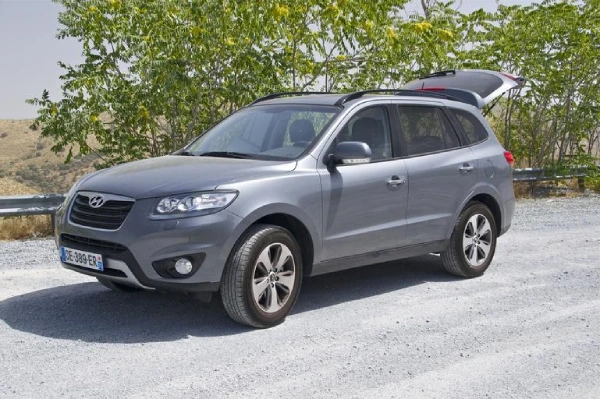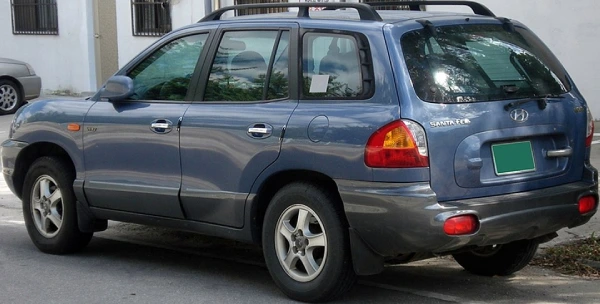In the “small” crossover market, the 2017 Hyundai Santa Fe Sport is in a strong competition for ever-increasing sales. “Small” is absurd because these aren’t little cars. However, for a variety of reasons, they are not considered mid-size. Important rivals that spring to mind are the Toyota RAV4 and Honda CR-V, the latter of which is now available in hybrid configuration. Making a decision in this class has never been more difficult, but the other players are excellent vehicles.
Although there are tradeoffs in each manufacturer’s lineup, the best-selling Ford Escape, Nissan Rogue, and Chevrolet Equinox are all good crossovers. Though its pricing is beginning to catch up with the competition, the Santa Fe Sport has always been competitive and somewhat of a value offer.
Though its pricing is beginning to catch up with the competition, the Santa Fe Sport has always been competitive and somewhat of a value offer.
We first saw the Santa Fe Sport in 2013, and it’s still a good-looking car. You will need to search closely to identify the updated sections for 2017.
LED driving lights are now standard, and the headlights, grille, bumpers, and taillights are all brand-new.
Though not as shocking as it was in the 2013 model year, the general shape and the “Fluidic Sculpture” design language are aging nicely.
Since Hyundai has sold so many of these over the years, it has become a common sight.
Overall, the Santa Fe Sport’s design is a pleasant change from the crossover category’s conservative aesthetic, even though the 17-inch rims on this grade seem a little small, especially in comparison to the gorgeous 19-inch rims on the other trims.
Hyundai uses high-quality inside materials, including a blend of soft and hard plastics with intriguing textures and lustrous faux wood trim.
The heated leather seats were quite comfortable. There are twelve ways to alter the driver’s side.
The phone and music capabilities of the Santa Fe Sport are controlled via a tiny 5.0-inch touchscreen located in the center of the dash.
The dual-zone automatic temperature control system controls comfort, and the basic six-speaker sound system is adequate.
Hyundai adds luxurious features like the massive sunroof above and the heated steering wheel.
This trim level has respectable driver aid technology, including cross-traffic warning, blind-spot monitoring (which includes lane-change assist), and a backup camera with rear parking sensors.
Speaking of technology, the Santa Fe Sport at this trim level has a somewhat limited ignition system because you have to use an antiquated key to start it.
Excellent storage options are available throughout the cabin. In the middle of the dash is an intriguing rubberized bin with a pop-up lid, and behind the center stack is an open bin that has USB and auxiliary plugs in addition to two 12V plugs. Throwing a phone here while driving is a brilliant idea. If that isn’t enough, beneath the armrest lid lies a sizable bin.
The back seats of the large Santa Fe Sport are incredibly roomy and cozy. The seats recline for further comfort, and there is plenty of head and legroom. An armrest with cupholders, manual window blinds, and heated seats are amenities for the two outboard passengers. At the rear of the center console is a 12V charging plug.
With its substantial underfloor storage and roomy 1,003 L trunk, the Santa Fe Sport offers exceptional practicality. There is a huge 2,025 L of cargo capacity when the rear seats are folded all the way down.
The 2.4L four-cylinder engine that powered my review car produced 185 horsepower and 178 lb-ft of torque. Hyundai pairs this with an optional on-demand all-wheel drive system and a six-speed transmission. With a city rating of 12.0 L/100 km (20 US mpg) and a highway rating of 9.1 L/100 km (26 US mpg), the fuel economy is rather decent. Over our week with the Santa Fe Sport, we managed to get an unexpectedly high average of 10.6 L/100 km (22 US mpg).
Although my Santa Fe Sport’s standard engine isn’t very strong, it has enough torque to get off the line and performs admirably in the majority of driving scenarios. There is sufficient power to complete any type of routine driving, and if you give yourself an extra second or two when merging or passing, you will still arrive at the same destination. Naturally, the Santa Fe’s optional turbo engine raises the bar significantly; in my opinion, the increase is well worth it because it’s a powerful and smooth operator.
The Santa Fe Sport’s transmission has always impressed with its intelligent, smooth shifting. It is smooth and almost always in the proper gear. If you choose, you can use the shift lever to manually change the gears.
Three drive modes are available for the Hyundai Santa Fe Sport. You can select between Normal, Eco, and Sport settings with a button on the dash. These modes affect the vehicle’s steering effort, transmission programming, and throttle responsiveness. Although they don’t significantly alter the car, the modes are discernible.
Although there is a lot of body lean in bends, the vehicle handles well and has an incredibly smooth ride. Along with an efficient and discrete all-wheel drive system, the Santa Fe demonstrated exceptional traction across a range of terrain, including some rough, ice-covered side roads. Additionally, we discovered that the cabin was remarkably quiet in most circumstances; however, as you accelerate, you can obviously hear the normally aspirated four-cylinder.
With this engine, the Santa Fe Sport can pull about 1,270 kg (2,800 lb) behind it while towing in any way.
The Santa Fe Sport is unassuming in its calm competence and accomplishes everything very well. I say this as a compliment. The typical mid-size crossover buyer is searching for precisely that. Daily ownership without any surprises or drama.
The concept of a high wife approval factor, or WAF, was introduced. She stated it looks lovely from the outside, and she appreciated the inside and comfy ride. She doesn’t care much about horsepower.
The Santa Fe Sport offers excellent comfort and utility, good performance and economy, and good value, albeit not as good as it once was. In this class, the Santa Fe Sport is a formidable rival that merits attention. If I had the money, I would get the upgraded turbo engine, but this almost base model also has many amazing features.
